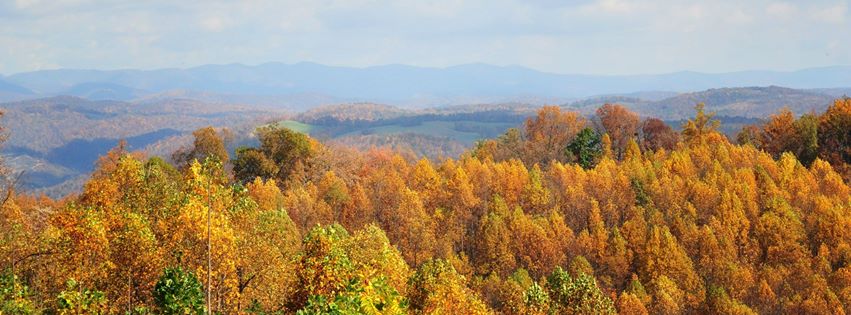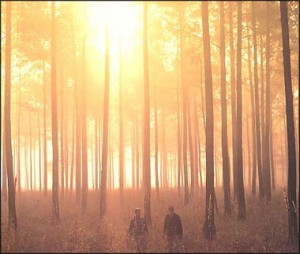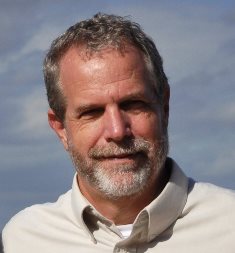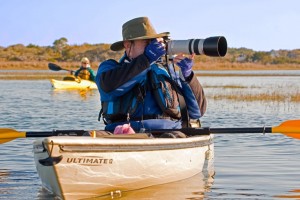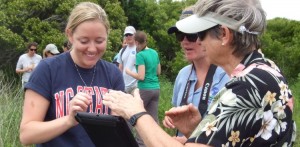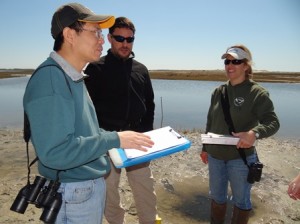Susan Colby, a staff person and alumna of our Department of Parks, Recreation and Tourism Management was recently named chair of the UNC Staff Assembly representing over 27,000 UNC System staff members to UNC System President, Tom Ross. She shared with us a little about the path which lead herto this leadership position.
At the age of 12, Susan Saunders Colby (BA, BS PRTM, ’85, MPRTM, ’12) looked off the balcony of Lee Residence Hall over central campus towards downtown Raleigh and knew that she wanted to attend NC State University.

I was a delegate to NC 4-H Club Congress for several years and each summer we would spend a week at State for 4-H competitions. I just fell in love with the campus and the city of Raleigh. Plus my favorite color is ‘red’ so I didn’t have a problem with the school colors.”
Colby entered NC State in the fall of 1980 with sights set on having a career in sports broadcasting. After the first communications class, she decided that might not be her best career choice. So, sitting on her bed in Lee Hall, with the help of the old-fashioned NC State Course Catalog, she found Recreation Resources Administration (now Parks, Recreation & Tourism Management) and felt this major would lead to a career which would keep her involved and enhance the things she loved.
“I remember thinking ‘what would my dream job look like?’ and coming up with the answer of ‘wearing shorts, t-shirts, a bathing suit and sneakers in the summer, sweatpants in the winter, something in sport or outdoors, and working with kids and older adults’. I was thrilled to find RRA. The things I learned from Beth Wilson, Carol Love, Bob Sternloff and so many others set me up for a successful career with the YMCA. My first position was as Youth and Day Camp Director, then as Health and Wellness Director where I worked with preschoolers through active older adults. I had my dream job!”
Colby returned to NC State in 2000 and now serves as the Student Services Coordinator for the NC State PGA Golf Management Program in PRTM. She is the advisor for the PGM Ambassadors, and the Women in PGA Golf Management and the Women Rising to the Top in PRTM student organizations. “I love what I do now. I enjoy watching our students grow, mature, graduate and become successful in their careers and in life. I guess I’ve had two dream jobs really.”
This month, October 2013) Colby will take on another leadership role as Chair of the UNC Staff Assembly representing over 27,000 UNC System staff members to UNC System President, Tom Ross. She just completed a year as Chair of the NC State Staff Senate in which she served as the voice of staff to Chancellor Randy Woodson and members of the NC State administration and Board of Trustees. “I feel like I’m ‘tri-lingual’, says Colby. ‘I speak student, alumni and staff.”
In her upcoming role with the UNC Staff Assembly, Colby will lead discussions with staff members from the 17 institutions across NC and relay information from those meetings to President Ross and his staff at UNC General Administration.
“Right now there is a lot talk about higher education, budget concerns, and staff reductions in force. Staff are worried. My goal is to be an effective communicator to the President on behalf of my colleagues throughout the state. And, to work with staff from the different campuses to generate ideas to help with morale issues and ideas for no-to-low cost benefits which can be given to employees who haven’t had a raise in 4 years.”
Colby earned her MPRTM in December 2012. In regards to the PRTM Online Masters Program she says, “I absolutely loved the Master of PRTM program. I learned so much. Most of my comments to the Staff Assembly delegation last October came from lessons learned through Dr. Jason Bocarro’s class on Organizational Behavior and Leadership.
Thanks to the grant writing portion of the Advanced Fiscal Management class I now have the basis for a grant I’d like to write to the PGA Foundation regarding funds for adaptive golf equipment. The funds would allow our students to work with people who would like to learn to play golf, but have special needs. The PRTM Online Masters is a great program and I’d would highly recommend it. You’re never too old to learn!”



